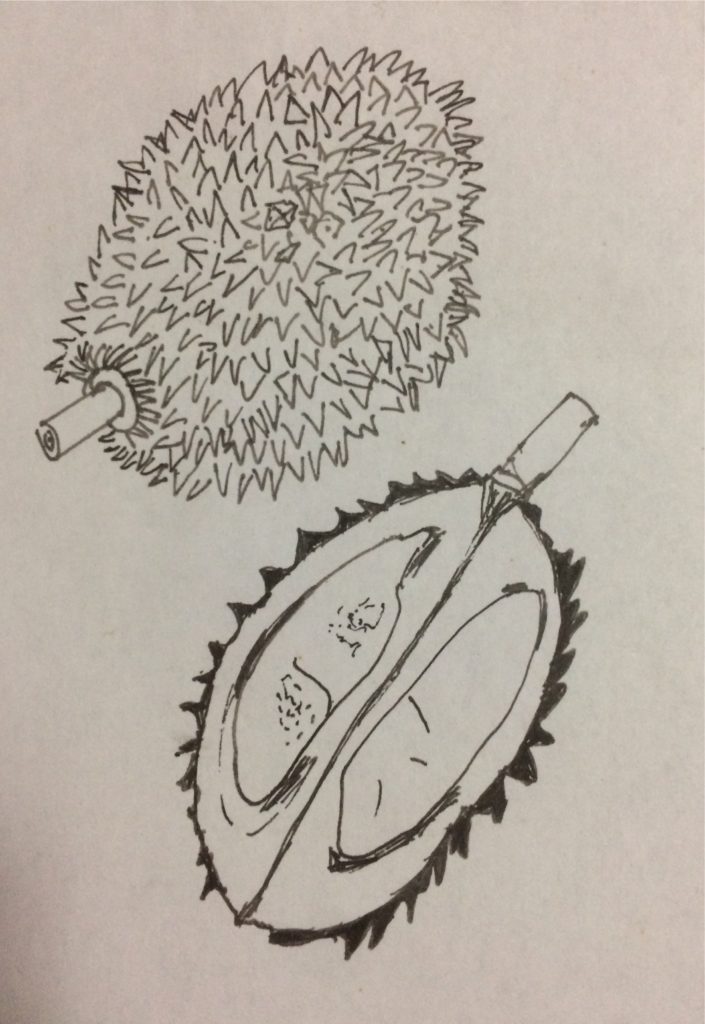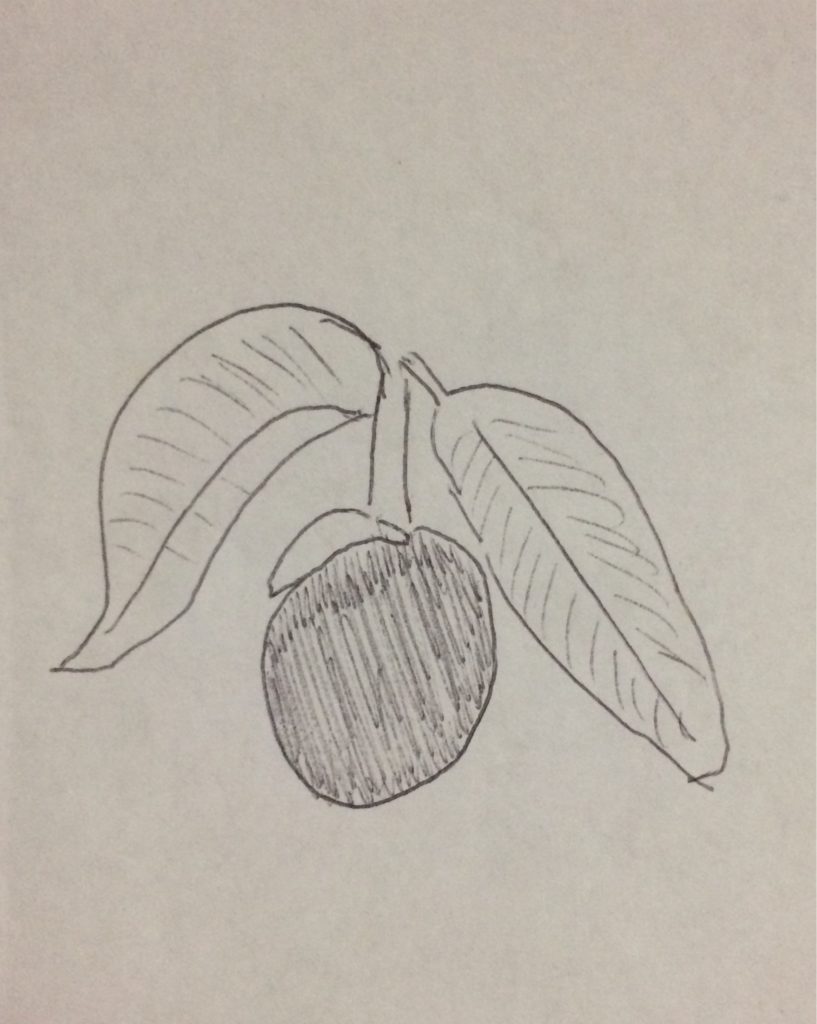

By Sharmini Jayawardena
This site got me so caught up in the pursuit that I found foraging in the wild for edible mushrooms, fungi, nuts, berries, leaves and fruits in the temparates to be a most exciting idea. When you were actually able to identify a rare edible species for example or gather an abundance of hazel nuts or chestnuts or wild apples (which were seeded probably from discarded cores or by trees that grew in hitherto abandoned orchards or other form of seed dispersal of some sort), making the most of it in so many different ways of preserving them made it all the more exhilarating.
She goes on to say: “Of course, a major source of nourishment on a foraging walk is taken in through the eyes and ears. We loved listening to all of the birds singing, and just seeing all of the Spring beauty around us.”
andhereweare.net
However, let common sense prevail on foraging walks. It is not advisable to go around eating plants you are not familiar with. For doing some research first to make sure you know what it is, here are a few books she recommends: Food for Free, Foraging and Feasting, Thrifty Forager, The Forager’s Harvest.
Having said that, most wild edible foods are packed with the kind of nutrition that is far lacking in their cultivated companions. Much less of the wild kind needs to be consumed for the same benefits to be reaped.
www.wakeup-world.com
We are ever ready to pay high prices to buy these in the form of ready made products when they are to be found for free at our doorstep!
So, forage responsibly. Do not strip the trees or plants bare! Pick the foods that are growing in abundance so that sustainability can be maintained.
Wild foods need no packaging. Nor do they cause pollution or create food miles in transportation.
For a few tips on foraging – it is best to avoid picking anywhere where they may have sprayed with herbicides or pesticides and to avoid foraging foods growing next to busy roads.
She says she cannot understand why anyone would want to buy apples in the store in autumn when so much of it was available just for the picking as it were.
Gorgeous!
This lead me to wonder how foraging in the wild for wild edibles would be like in the tropics and I discovered this wonderful e-book on this topic –
Foraging in the Tropics by The Wild Food School.
The Introduction by Marcus Harrison, states that not most edible trees are mentioned in the book and those who know such types of edible trees could get in touch.
I’m getting in touch in this way since there is no other way to provide the information. The jambu or water apple which is found in South Asia as well as South East Asia in numerous types is not in the e-book. Neither is what is known as the king of fruits: the durian, which grows in abundance in its vast variety, in the wild in West Malaysia, known as hutang durian, included in the e-book.
www.yearofthedurian.com


Just as I suspected foraging in the tropics was an entirely different ball game! Or should I say a food game! As the canopy of trees tended to form at the top in the tropics the foliage at the bottom lacked the light to produce abundantly unless of course various natural causes provided for it. Most of the time, trees tended to reach for the light thereby growing to be quite tall.
Possibly by the side of river banks or on the banks of waterways or mountain slopes one could find the many varieties of edible leaves and also edible fungi on the ground.
So, one was able to pick anything from the ground like mushrooms or berries from shrubs, scarcely, since there was little light in most areas at the bottom for these to grow.
Instead you will be good looking for the multitude of fruits on trees like soursup, custard apple, cherimoya, mango, papaya, guava, rambutans, star fruit, longans, mangosteens, lychee, dragon fruit, dwarf cherry, prickly pear, passionfruit, mombin, pomegranate, ripe jakfruit, bamboo and jakfruit and breadfruit, (unripe to be boiled and eaten as a substitute for grain carbs), coconuts, date palm and so on. These are but a few species named in the book.




You are really spoiled for choice even in the number of rhizomes growing wild, in that of the ubiquitous banana, for one, in its vast variety, and the fiddle-head fern which the e-book does not make mention of.
There are also a wide variety of tubers such as sweet potato and cassava which will be edible once they are cooked which is not mentioned in the e-book. Then of course the tamarind which is a South East Asian fave.
In the tropics one must also be geared with a strong lengthy stick with which to pick the ripe fruit off the trees, (or else you can pick the ones that have dropped down at the bottom of the trees).
Besides this, you must be adequately geared assuming you are not marooned somewhere but are undertaking a foraging expedition as a pursuit.
A pair of scissors, or a good pocket knife.
Some sort of container: a wicker basket, or reusable shopping bag.
Sturdy shoes or boots, long sleeved shirt and pants (trousers) to protect from nettles, thorns, things like poison ivy/oak if in the temparates or insect bites and undergrowth in the tropics.
A pair of gloves is optional. Carrying a notebook with you can be invaluable for keeping track of locations and harvest dates for the following year.
Wearing a helmet (No kidding) will do you good if you are foraging for the Durian.
I have been intrigued by this way they pick fruits from trees using a wicker basket or reusable shopping bag tied to the end of a strong stick which has a metal hook attached to it, in Malaysia! Would you believe, the fruit when picked by the hook just pops right into the bag, preventing any damage to it, unlike when falling to the ground.
One day I hope to go on an adventure of my own into the wild, which would hopefully grow into a regular endeavour in the future.
Of course, I have foraged in the concrete jungle for ornamental as well as wild plants like the morning glory, dumb cane, banana, snake plant, pothos, caladium, the antignum and the frangipani, from abandoned gardens or homesteads and from islands on highways in the city, at times, which is also known as guerilla gardening.
Happy foraging y’all![]()



